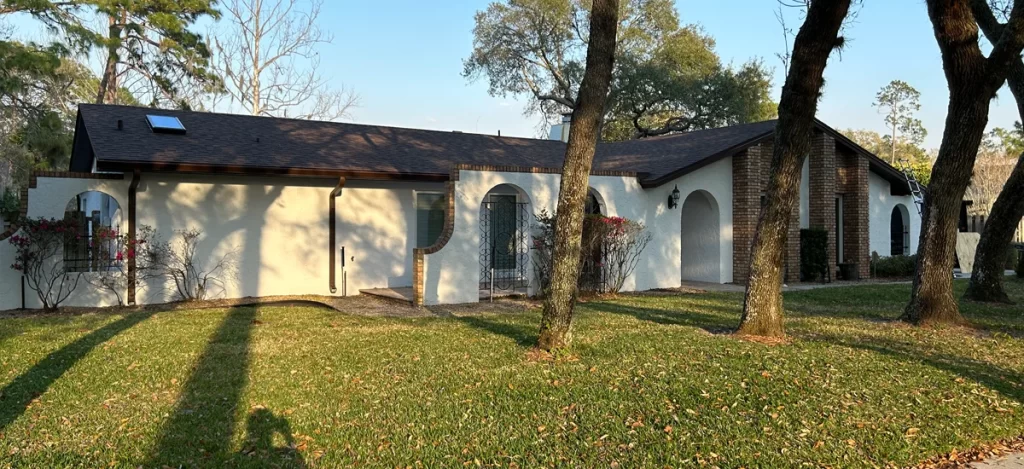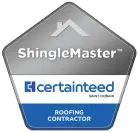Preventing Roof Rust in Humid Storm-Prone Areas: 7 Proven Strategies to Protect Your Home
Maintaining a roof is one of the most critical aspects of homeownership, especially in humid and storm-prone areas. The combination of high moisture levels and frequent storms creates the perfect breeding ground for rust, which can compromise the structural integrity of your roof. Understanding how to prevent roof rust not only protects your investment but also ensures the safety of your home.
This article delves into the essential methods for preventing roof rust in humid storm-prone areas, providing you with actionable tips and insights to keep your roof in pristine condition.
Understanding the Causes of Roof Rust
To effectively prevent roof rust, it’s important to first understand what causes it. Rust forms when iron, oxygen, and moisture interact, leading to the oxidation of metal surfaces. In humid environments, the high levels of moisture in the air accelerate this process. Additionally, salt in coastal regions can exacerbate rusting by acting as a catalyst in the oxidation process.
Storms introduce another layer of complexity. The combination of wind, rain, and sometimes hail can strip protective coatings from metal roofs, leaving the underlying metal exposed to the elements. Over time, even small areas of rust can spread, weakening the roof’s structure.
Choosing the Right Roofing Materials
One of the most effective strategies for preventing roof rust is selecting the right roofing materials. In humid, storm-prone areas, not all materials are created equal. Metal roofs are popular for their durability, but it’s crucial to choose metals that are resistant to rust.
Galvanized Steel: This is steel coated with a layer of zinc, which protects the underlying metal from rusting. Galvanized steel is a common choice for roofs in humid areas because it offers a strong barrier against rust.
Aluminum: Naturally resistant to rust, aluminum is a great option for roofing in storm-prone regions. It doesn’t corrode like steel, making it an excellent long-term investment.
Copper: Although more expensive, copper roofing is highly resistant to rust and adds a unique aesthetic to homes. Copper develops a patina over time, which protects the metal from corrosion.
Zinc: Zinc roofing is self-healing, meaning that if it gets scratched, it can repair itself over time. This makes zinc an excellent choice for areas with frequent storms that might cause damage to the roof.
Regular Roof Maintenance and Inspections
Regular maintenance is key to preventing roof rust. By conducting routine inspections, especially after storms, you can catch early signs of rust and address them before they become major issues.
Clean Your Roof Regularly: Dirt, debris, and leaves can trap moisture against the roof surface, increasing the risk of rust. Regular cleaning helps to remove these materials, reducing the likelihood of rust forming.
Inspect for Damage: After a storm, inspect your roof for any signs of damage, such as missing shingles or damaged metal panels. Even small cracks or holes can allow water to seep in and cause rusting.
Check for Rust Spots: If you notice any rust spots during your inspection, address them immediately. Small rust spots can be sanded down and treated with a rust-inhibiting primer and paint to prevent further corrosion.
Proper Roof Ventilation
Proper ventilation is crucial in humid areas to reduce the risk of rust. Good ventilation allows air to circulate through your attic, reducing moisture levels and preventing condensation from forming on the underside of your roof.
Install Ridge Vents: Ridge vents are installed at the peak of your roof and allow hot, humid air to escape from your attic. This helps to keep your roof cool and dry, reducing the risk of rust.
Soffit Vents: These are installed under the eaves of your roof and allow fresh air to enter your attic. Soffit vents work in tandem with ridge vents to ensure a steady flow of air through your attic.
Attic Fans: In areas with extreme humidity, attic fans can be used to increase air circulation and reduce moisture levels. These fans are particularly effective during the summer months when humidity is at its highest.
Applying Protective Coatings
Applying protective coatings to your roof can provide an additional layer of defense against rust. These coatings create a barrier that prevents moisture from coming into direct contact with the metal.
Rust-Inhibiting Primers: Before painting your roof, apply a rust-inhibiting primer. This primer will help to prevent rust from forming underneath the paint.
Sealants: Sealants can be applied to seams and joints on metal roofs to prevent water from seeping in. This is particularly important in areas where panels overlap, as these are prime locations for rust to develop.
Elastomeric Coatings: These are flexible, rubber-like coatings that can be applied to the entire roof surface. Elastomeric coatings provide excellent protection against moisture and are highly effective in preventing rust.
Gutter Maintenance and Drainage Solutions
Proper drainage is essential for preventing roof rust. Gutters that are clogged or not functioning correctly can cause water to pool on your roof, increasing the risk of rust.
Clean Gutters Regularly: Ensure that your gutters are free from debris such as leaves and twigs. Clogged gutters can lead to water overflow, which can damage your roof and cause rust.
Install Gutter Guards: Gutter guards can help to keep debris out of your gutters, reducing the need for frequent cleaning. This also ensures that water flows freely through the gutters and away from your roof.
Ensure Proper Downspout Placement: Downspouts should be placed in a way that directs water away from your home’s foundation. Improper placement can lead to water pooling around your home, which can cause moisture to rise up through the roof and lead to rust.
Dealing with Flashing and Fasteners
Flashing and fasteners are often overlooked when it comes to preventing roof rust, but they play a crucial role. Flashing is the material used to seal joints and seams on your roof, while fasteners are the nails or screws used to secure roofing materials in place.
Choose Rust-Resistant Flashing: Use flashing made from rust-resistant materials such as aluminum or galvanized steel. This will help to prevent rust from forming at vulnerable points on your roof.
Inspect Fasteners Regularly: Over time, fasteners can become loose or corroded, which can lead to water infiltration and rust. Regularly inspect your roof’s fasteners and replace any that are showing signs of wear.
Seal Fastener Holes: If you need to replace or tighten fasteners, make sure to seal the holes afterward. This will prevent water from seeping in and causing rust around the fastener points.
The Role of Roof Design in Preventing Rust
The design of your roof can also play a significant role in preventing rust. Certain design features can help to minimize water accumulation and improve drainage, which in turn reduces the risk of rust.
Steep Slopes: Roofs with steep slopes allow water to run off more easily, reducing the likelihood of standing water and rust formation. In storm-prone areas, a steeper roof is often more effective at preventing rust.
Overhangs and Eaves: Overhangs and eaves help to protect the sides of your roof from water runoff. They also provide additional shade, which can reduce the amount of heat and moisture that accumulates on your roof.
Valleys and Drains: Properly designed valleys and drains are essential for directing water away from your roof. Poorly designed valleys can trap water, leading to rust and other damage.
Conclusion
Preventing roof rust in humid storm-prone areas requires a proactive approach. By choosing the right materials, performing regular maintenance, and ensuring proper ventilation and drainage, you can significantly reduce the risk of rust and extend the life of your roof. Remember, early intervention is key. Addressing small rust spots and damage as soon as they are noticed will save you time and money in the long run, and keep your home safe and secure.
FAQs
What is the best material for preventing roof rust in humid areas?
Galvanized steel, aluminum, copper, and zinc are among the best materials for preventing roof rust in humid areas due to their resistance to corrosion.
How often should I inspect my roof for rust?
It’s recommended to inspect your roof at least twice a year, and after any major storms, to catch any signs of rust early.
Can I paint over rust to stop it from spreading?
While painting over rust can temporarily prevent it from spreading, it’s important to remove as much rust as possible and apply a rust-inhibiting primer before painting.
What role does ventilation play in preventing roof rust?
Proper ventilation reduces moisture levels in your attic, which helps to prevent condensation and rust on the underside of your roof.
How can I improve drainage to prevent rust on my roof?
Ensuring that your gutters are clean and properly functioning, and that downspouts direct water away from your home, can significantly improve drainage and reduce the risk of rust.
What are the signs of early rust on a roof?
Early signs of rust include discoloration, small reddish-brown spots, and rough patches on the metal surface. Catching these early can prevent more extensive damage.














